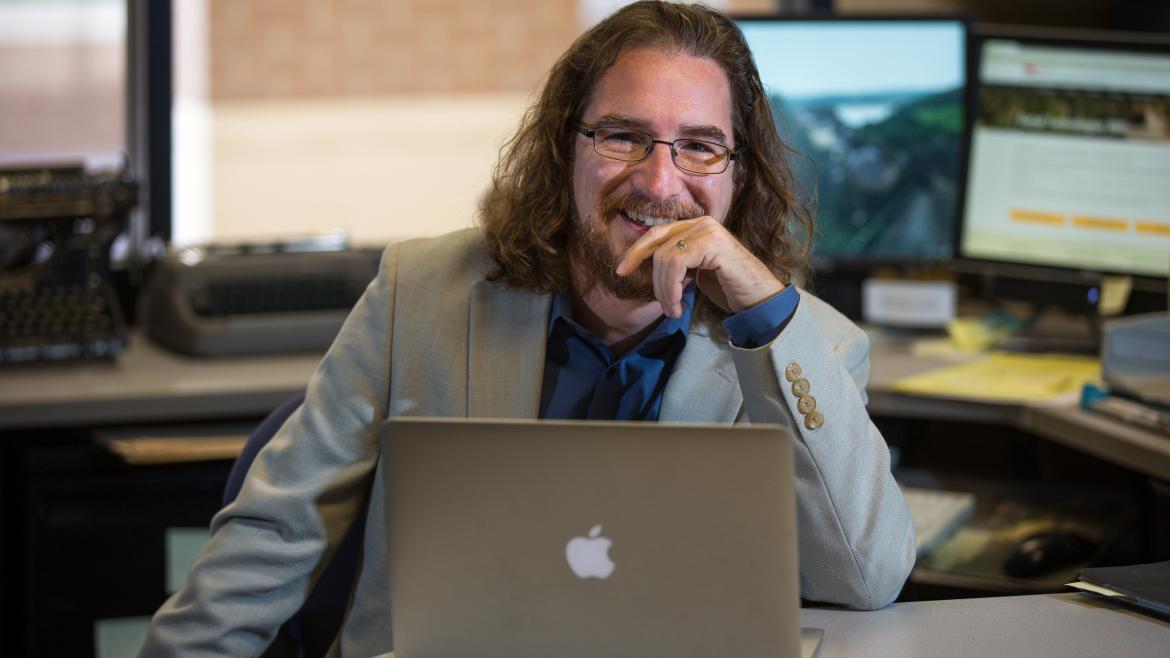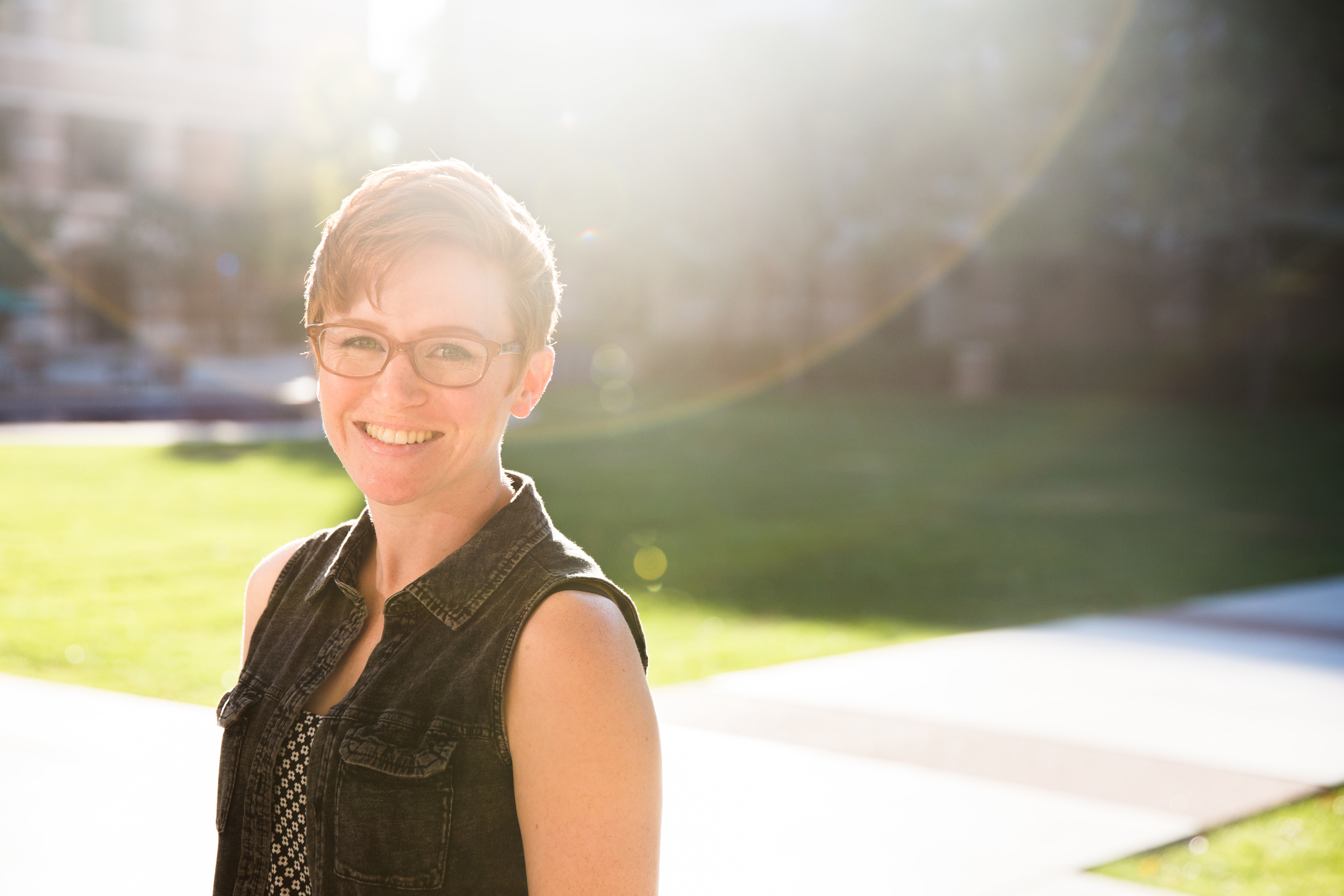“Please turn off all mobile devices.”
Is that even possible now?
In two generations, phones have gone from something that hung on the kitchen wall and didn’t get answered if you weren’t home to the polestar of consciousness. Look to your left; look to your right — it doesn’t matter where you are, including the freeway — someone within eyeshot is staring into something glowing.
We run into friends we haven’t seen in 40 years, we shop, learn, complain, fall in love, commit crimes, are recruited by terrorists — and it all happens in the etherworld of cyberspace. Twitter was for morons, pundits proclaimed at its debut. Now tell that to Pope Francis, Secretary of State John Kerry and Iranian President Hassan Rouhani, all of whom have made major announcements via the social medium.
“These are technologies that are so much a part of our everyday life,” said Greg Wise, a professor of social and behavioral sciences in the New College of Interdisciplinary Arts and Sciences on Arizona State University's West campus. “With these technologies, things don’t go away. People don’t go away. Pictures don’t go away. Information doesn’t go away. It’s easy to find stuff, but that’s a different condition to live in. That history is always there. That’s an opportunity to rediscover people and to be re-found, to have a broader social network than what we would have every day.”
ASU began teaching a new Master’s in Social Technologies degree last fall. Wise, the program director, said it was due.
“It seemed like a good time to do this sort of program that, I think, highlights the roles these technologies play,” he said. “People are always very interested when you say it’s a Master’s in Social Technologies. It’s very resonant today.”
The program, taught by nine faculty members, divides its focus between theoretical and applied work, drawing on social, behavioral, critical, cultural and design perspectives. Courses include Networked Social Technologies; Social Technology; and Community Informatics.

“These are technologies that are so much a part of our everyday life," said ASU professor Greg Wise. A master's program in social technologies is “very resonant today.”
Photo by Charlie Leight/ASU Now
One of the program’s goals is to give students a solid theoretical basis, said Alex Halavais, a program faculty member and associate professor of social and behavioral sciences.
“If you talk to people in the field, what they find is people have kind of cobbled stuff together but they don’t have good ideas that can tie together a larger strategy,” Halavais said. “Theory is really important for the research — that’s obvious, it guides what people are interested in — but it also ends up being really important for the applied, too.”
The degree is not about studying Facebook, Halavais said.
“We don’t want it to be dated as soon as they graduate,” he said. “Theory allows it to carry through over changes in technology. We also have a 20-year view of the technology, too. You have to think about not just what technology looks like now, but 20 years from now, and often that means looking back 20 years and saying, ‘What’s the trajectory over a long period of time?’ ”
Lauren Hewell just finished her first semester in the program. She came to the program with a bachelor's in communications.
“As an undergrad I was interested in social psychology and had a small interest into how technology integrates into our communications,” Hewell said. “A lot of our interpersonal communication is mediated by mobile devices. You can’t ignore that anymore.”
Hewell wants to work in content creation. “I’d like do some kind of social media management for an online platform,” she said.
Currently she works part time at an Apple store.
“It’s been fun to apply what I’m learning to my job and vice versa,” she said.
Not only is social media not a fad, it has gone from pastime to profession. According to LinkedIn, job postings for social media opportunities jumped 1,357 percent between 2010 and 2013. More than 5 million professionals have endorsements for social media on the same source.
Careers in social media are burgeoning: Internet marketing director, digital strategist, content marketing manager, online community manager, social media manager. In mid-December there were more than 31,000 social media jobs open nationwide. Postings included social media and content strategist at a midsize, high-tech public relations agency in Silicon Valley; social media strategist at a digital ad agency in Los Angeles; and social media correspondent for a public relations agency in New York.
Clint Post came into the program with a bachelor’s degree in human communications. Currently he runs social media platforms for two Valley health-care companies.
“I do enjoy this kind of work, but I see myself more as organizing a company around this work or the management and training of such employees,” Post said. “I don’t see myself being in one area. … I don’t have a set career in mind.”
Facebook and Twitter might or might not be around forever, but the need to communicate is here to stay, Post said.
“My end goal is to be involved with what’s coming out and how it shapes and changes societies,” he said.
For those who say all this is entirely new, they’re forgetting the history of how people interact with technologies, Halavais said. Things don’t get invented and immediately adopted. Cars went from being a rich man’s toy to ruling our lives. Adoption takes social changes and cultural changes, as well as other factors.
“It’s not just enough to know what the state-of-the-art is and the tech,” he said. “You have to know how that relates to people’s expectations around technology, the culture around technology, and the policy and social structures. … We can look at it in hindsight and say that’s how it played out in the past, and that’s probably going to be a model for how we can look at new technology.”
Technologies change all the time, Wise said.
“It’s this program, it’s that program, it’s going to be another program in another couple of years, but if you understand the principles and what they’ve been doing, it’s easier to manage that,” he said.
Ridiculing the degree as a master’s in Facebook is shortsighted, Halavais said.
“The easy response is: This is where the jobs are,” he said. “If you want to be working in technology, social media is all media, and it is all technology right now. There’s nothing frivolous about Google. There’s nothing frivolous about Facebook, either. This is where the business is, and it’s a large part of how we interact socially. It’s how our political system works, it’s how we interact with other people, and it’s a large part of how businesses connect with their customers. …
“I sometimes describe myself as a Facebook professor just for the laugh, but it’s really hard for me to understand how anyone could see this as frivolous. … On the contrary, I can’t imagine something that would be more central to social and business life right now.”
More Science and technology

ASU-led space telescope is ready to fly
The Star Planet Activity Research CubeSat, or SPARCS, a small space telescope that will monitor the flares and sunspot activity of low-mass stars, has now passed its pre-shipment review by NASA.…

ASU at the heart of the state's revitalized microelectronics industry
A stronger local economy, more reliable technology, and a future where our computers and devices do the impossible: that’s the transformation ASU is driving through its microelectronics research…

Breakthrough copper alloy achieves unprecedented high-temperature performance
A team of researchers from Arizona State University, the U.S. Army Research Laboratory, Lehigh University and Louisiana State University has developed a groundbreaking high-temperature copper alloy…



